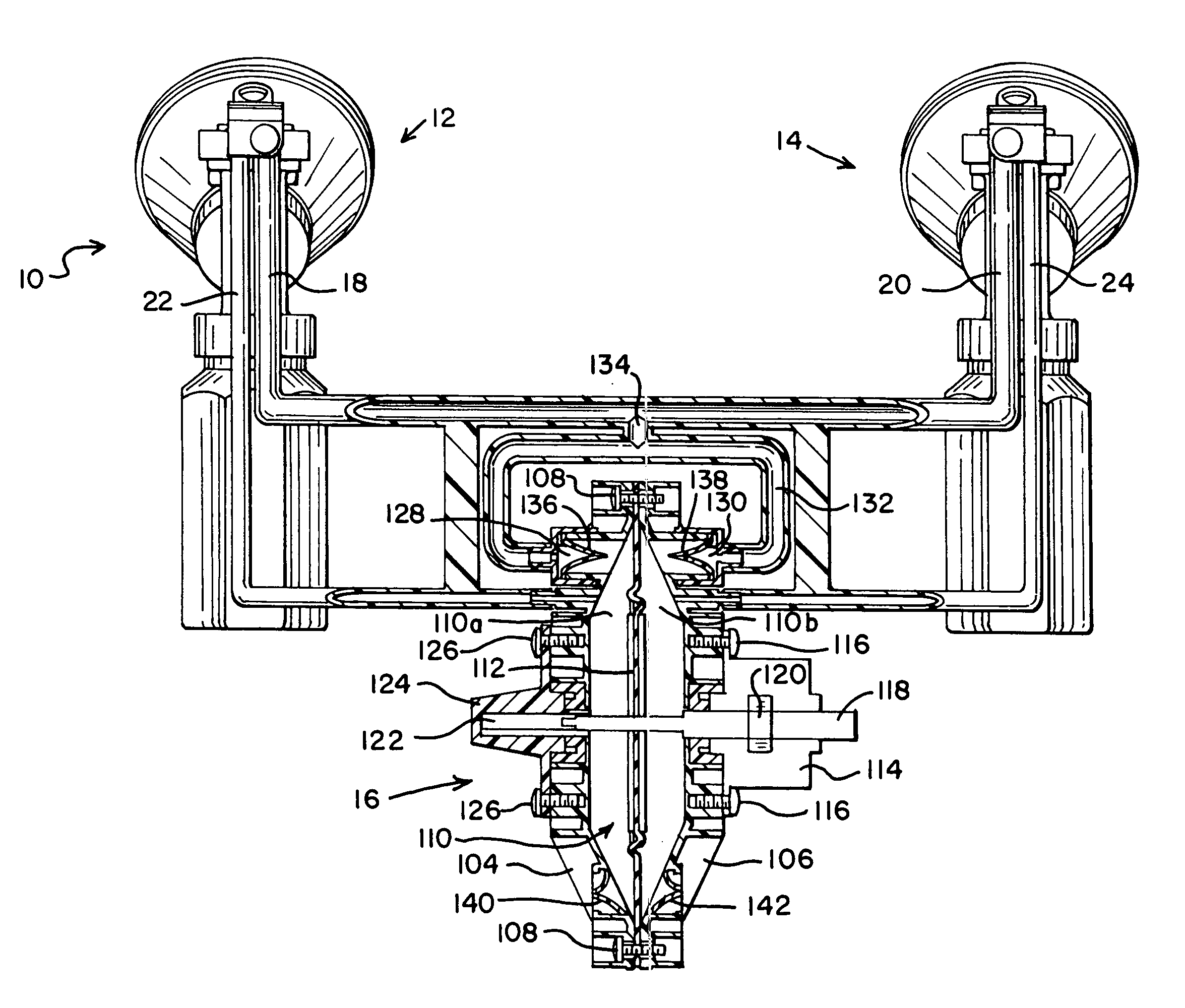Apparatus for expressing milk
- Summary
- Abstract
- Description
- Claims
- Application Information
AI Technical Summary
Benefits of technology
Problems solved by technology
Method used
Image
Examples
Embodiment Construction
[0038]Referring to FIG. 1, apparatus 10 is provided for expressing milk from one breast, or from two breasts simultaneously. The apparatus 10 includes a first collector or expressor 12 and a second expressor 14. A pump 16 is connected to both expressors 12, 14 through vacuum lines 18, 20, and air pressure lines 22, 24.
[0039]The pump 16 creates a vacuum which engages the breasts, and contributes to drawing the milk from the breasts. The pump also creates pressure pulsation around the areola and some or all of the nipple, as will be seen. The pump 16 can be powered by line voltage, a battery, manually or the like.
[0040]The expressors 12, 14 are shown in greater detail in FIGS. 2 and 3. Each expresser includes a manifold 26, a cup assembly 28 which fits over a breast, a cap 30, a vacuum adjustment release valve assembly 32, a collection vessel 34 and a valve 36. The collection vessel can be a bottle made of plastic-like material or the like, or a bag, as will be seen, as can be oriente...
PUM
 Login to View More
Login to View More Abstract
Description
Claims
Application Information
 Login to View More
Login to View More - R&D
- Intellectual Property
- Life Sciences
- Materials
- Tech Scout
- Unparalleled Data Quality
- Higher Quality Content
- 60% Fewer Hallucinations
Browse by: Latest US Patents, China's latest patents, Technical Efficacy Thesaurus, Application Domain, Technology Topic, Popular Technical Reports.
© 2025 PatSnap. All rights reserved.Legal|Privacy policy|Modern Slavery Act Transparency Statement|Sitemap|About US| Contact US: help@patsnap.com



